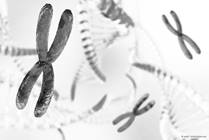Search Results
Viewing: 21-30 of 118 | All

Blog
Vaginal Inflammation and Irritation: Treating Vulvovaginitis
Vulvovaginitis, or inflammation and irritation of the genital area, may occur in females of any age – including newborns, toddlers, and children, but it most commonly occurs in girls who have not yet started puberty.

Blog
Turner Syndrome: Unique as a Butterfly
Turner Syndrome is a genetic condition, a difference in the number or type of sex chromosomes, in those assigned female at birth.

Condition
Obstructed Mullerian Duct Anomalies
Obstructed mullerian duct anomalies are defects in the development of the reproductive system that are present in a female baby before birth.

Condition
Turner Syndrome
Turner Syndrome is a rare genetic disorder that affects females. It is caused by a partial or complete loss of an X chromosome.

Blog
Menstruation in Adolescents: The Importance of Using Menses as a Vital Sign
Adolescence is a time of many new things – including puberty changes and the onset of menstruation. A first period can be an exciting experience, but one that may cause some anxiety for young women and their caregivers.
Nevus Sebaceous
A nevus sebaceous is a type of birthmark that usually appears on the scalp. It may also appear on the face but this is less common. It is made of extra oil glands in the skin. It starts as a flat pink or orange plaque (slightly raised area). A nevus sebaceous does not go away on its own.

Specialty
Endocrinology
2222 Cherry Street
Suite 2300
Toledo, OH, 43608
(419) 251-8025
Click to learn more.

Condition
Varicoceles
A varicocele is a mass of swollen blood vessels in the spermatic cord – the structure in the scrotum that connects the testicles to the body. Varicoceles are generally harmless and painless and do not require treatment. Physicians will recommend surgery if it appears the varicocele will impact testicle growth and future fertility.

Condition
Gynecomastia
This Helping Hand™ is about gynecomastia and explains what it is, how it is treated and what the symptoms are.

Blog
Klinefelter Syndrome: An Extra X Makes the Diagnosis
Klinefelter syndrome is very common, affecting approximately 1 in 600 males, although many individuals may go undiagnosed.
